#1 Cloud Security Assessment Services (Trusted by 1000+ Teams)
Detect IAM vulnerabilities, data exposure, and policy violations before attackers do. Our cloud security assessment services deliver in-depth security configuration reviews across multi-cloud environments with expert-vetted findings, prioritized risks, and clear remediation aligned to CIS, NIST, and ISO 27001 frameworks.

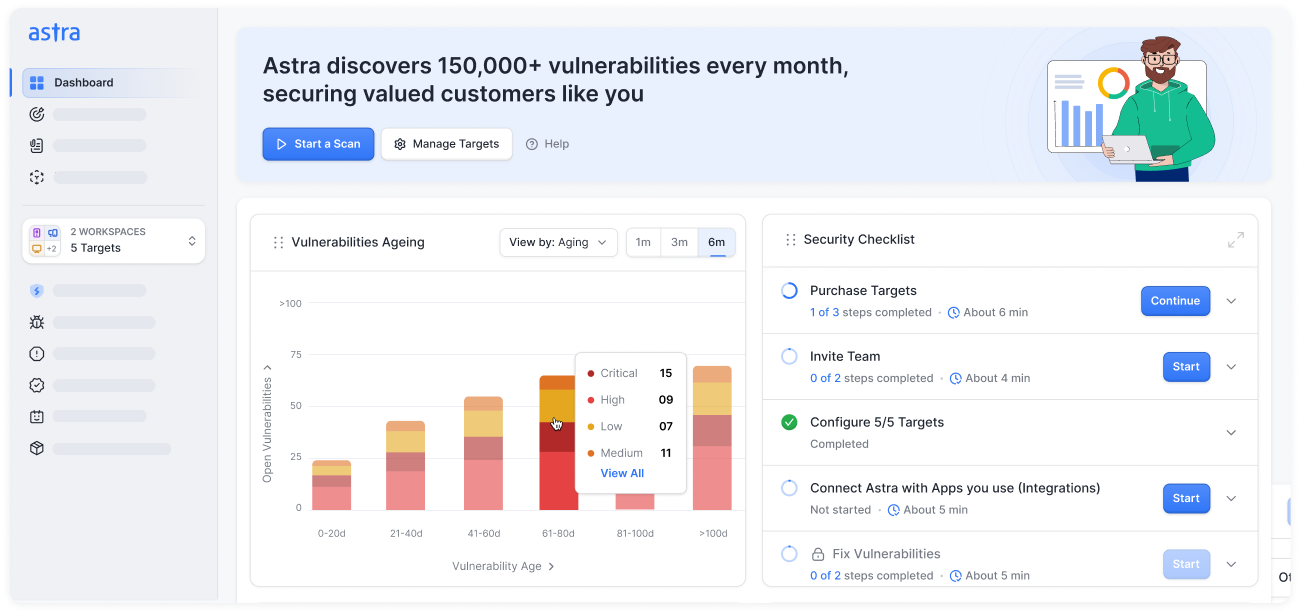










Why choose Astra Security’s cloud security assessment services?
Secure your multi-cloud infra with our comprehensive cloud security assessment services that combine automated scanning, expert validation, and continuous monitoring built for AWS, Azure & GCP environments.
- Focus on critical risks with 400+ offensive checks for misconfigs and privilege gaps
- Validate access in real-time to eliminate false positives from unauthenticated scans
- Get detailed, dev-friendly steps to fix vulnerabilities, speeding up remediation
- Instant rescans on individual vulnerabilities to validate fixes without a full re-scan
- AI-assisted threat modeling that reduces human error and increases assessment depth across cloud
- Context-aware analysis adapts to your cloud with platform-specific exploit-informed rules
- ML models evolve from real-world cloud attack data to improve accuracy over time
- Scale security coverage without increasing headcount with AI-driven automation for AWS, Azure, and GCP
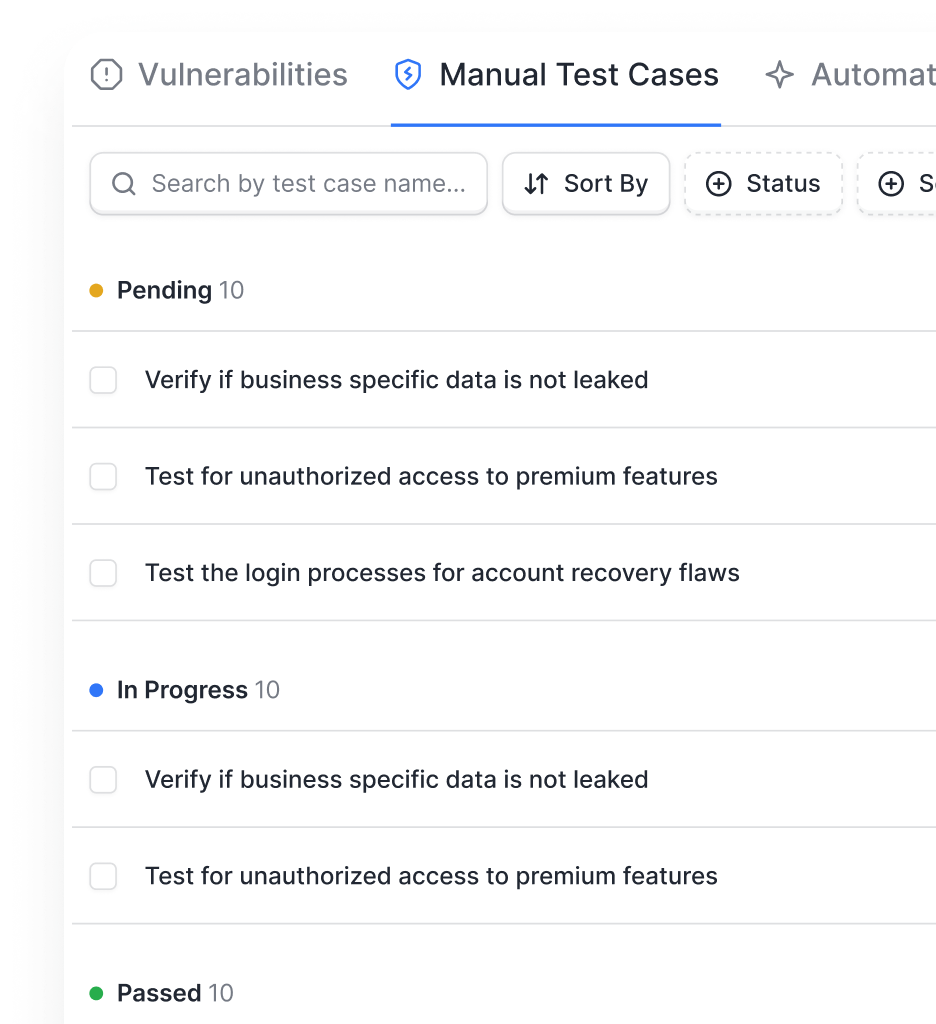
- Get ongoing visibility into your cloud infra without point-in-time blind spots
- Detect config drift and compliance violations before they become security incidents
- Instantly rescan individual vulnerabilities to validate fixes without full re-assessment
- Monitor for deviations from secure baselines with automated alerting and tracking
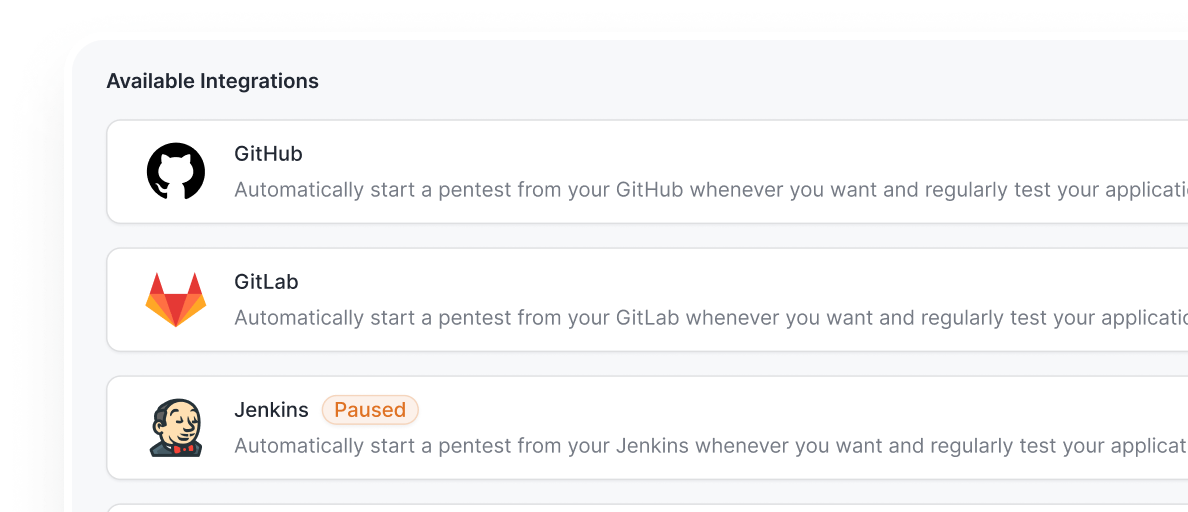
- Integrate seamlessly into your dev workflows with GitHub/ GitLab, Jenkins, and Bitbucket support
- Catch misconfigs early in your infrastructure-as-code pipelines before deployment
- Automate Slack alerts and Jira ticketing to streamline vulnerability workflows
- Enable developers to ship securely without slowing release velocity
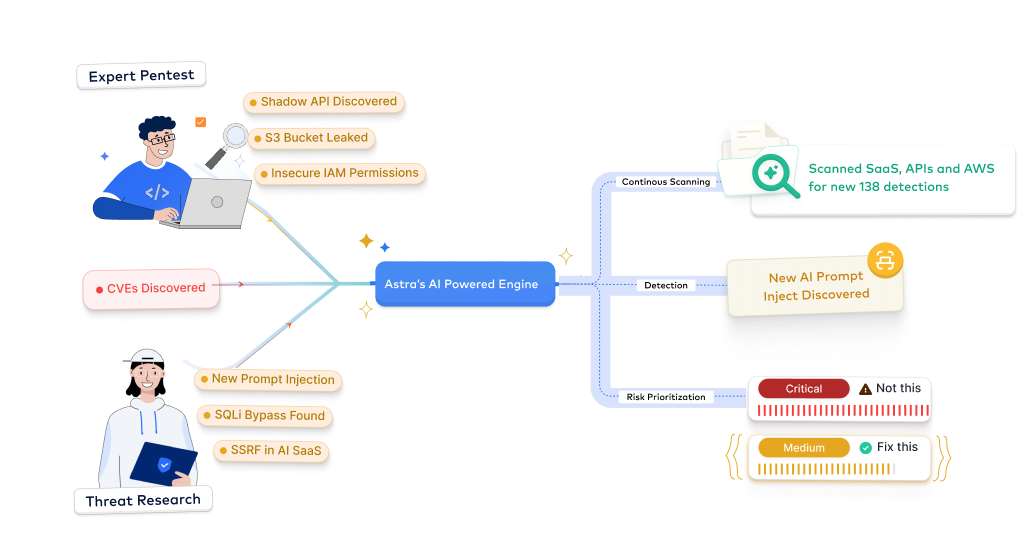
- Generate compliance-mapped reports for SOC 2, ISO 27001, PCI-DSS, HIPAA, NIST, and FedRAMP
- Get contextualized findings aligned to your regulatory framework for faster audits
- Scan GovCloud-hosted applications with specialized security checks
- Show cloud security maturity to fasten vendor assessments and close enterprise deals

Discover how expert-led cloud security assessment services can uncover critical misconfigurations and strengthen your multi-cloud posture for just $5,999.
Start TrialAstra's 7-Step Pentest Process
How our cloud security assessment services work
Learn how our team delivers smarter protection via expert-led cloud security assessment service.
Discovery & Access
- Identify and catalog all in-scope cloud assets across your AWS, Azure, and GCP environments
- Establish secure, read-only access using credential-aware scans with verified tokens and programmatic keys
- Define assessment parameters to cover multi-region environments and apps, including GovCloud
- Align the engagement scope with compliance frameworks like SOC2, ISO 27001, and PCI-DSS
Outcome: Build a complete cloud asset inventory with authenticated access for deep security evaluation


Config Posture Review
- Run automated scans using 400+ configuration checks to identify misconfigurations, privilege gaps, and security weaknesses
- Continuously map your configuration against CIS Benchmarks and cloud-specific best practices
- Identify insecure defaults, exposed services, and mismanaged identities in real-time
- Correlate findings with historical data to track posture drift and emerging risks
Outcome: A comprehensive baseline of configuration vulnerabilities and compliance gaps, ready for analysis
Threat-Path Analysis
- Emulate real-world attack vectors to uncover exploitable paths between misconfigs and identities
- Analyze the blast radius of critical findings to understand potential business impact
- Contextually prioritize risks based on exploitability, access level, and compliance relevance
- Map vulnerabilities to specific compliance controls for targeted remediation
Outcome: Identify real-world attack scenarios that could compromise your cloud infrastructure


Manual Validation
- Our security experts manually validate high-severity configuration findings to ensure accuracy and eliminate false positives
- Conduct in-depth reviews of configuration settings, IAM policies, and access controls to verify adherence to security best practices
- Receive expert-validated findings, with a comprehensive understanding of configuration issues and their potential business impact
Outcome: Receive expert-validated, exploitable vulnerabilities with verified business impact assessment
Reporting & Handoff
- Receive a detailed report with dev-friendly steps to fix each vulnerability, complete with code snippets
- Get compliance-mapped evidence for SOC2, ISO 27001, and PCI-DSS in an audit-ready format
- Access interactive dashboards for live vulnerability tracking and team collaboration
- Schedule a handoff call with our experts for walkthroughs and remediation planning
Outcome: Gain actionable insights with dev-friendly fixes and compliance-ready documentation


Rescan & Attestation
- Conduct instant, targeted rescans of individual vulnerabilities to validate fixes without full scans
- Perform final comprehensive rescans to ensure all identified risks are remediated
- Capture time-stamped validation evidence for audit trails and certification renewals
- Issue a verifiable certificate of Cloud Security Assessment attesting to your hardened posture.
Outcome: Achieve verified remediation with continuous cloud security monitoring and compliance attestation
From startups to fortune companies,
1000+ companies trust Astra












































.webp)





Get zero false positives and continuous posture monitoring with Astra Security’s expert-led cloud security assessment services.
Request VAPT ServicesTypes of cloud security assessment services
Explore our comprehensive suite of cloud security assessment services, designed to secure every layer of your multi-cloud environment.

Cloud Infra Configuration Review
- Scan AWS, Azure, and GCP for security misconfigs, insecure defaults, and privilege escalations
- Continuously monitor for posture drift and mismanaged identities across multi-region environments
- Compliance-ready for CIS Benchmarks, SOC 2, ISO 27001, NIST, and PCI-DSS

Kubernetes & Container Security Assessment
- Probe container registries, orchestration layers (like EKS & AKS), and pods for orchestration risks
- Uncover vulnerabilities in cluster configs, network policies, and secrets management
- Aligns with OWASP Kubernetes Top 10, CIS Benchmarks, and SOC 2 controls

Continuous Vulnerability Scanning
- Detects and validates misconfigurations and IAM risks across AWS, Azure, and GCP
- Run 400+ cloud-specific checks across configurations, permissions, and services, detecting misconfigs, excessive privileges, and compliance gaps
- Compliance-mapped for PCI-DSS, ISO 27001, SOC 2, and GDPR

Cloud API Security
- Discover and test shadow, undocumented, and public-facing APIs for data exposure risks
- Run authenticated, in-depth scans against REST, GraphQL, and serverless API endpoints
- Aligns with OWASP API Security Top 10, PCI-DSS, and SOC 2 compliance requirements

Serverless Function Security
- Assess serverless architectures (AWS Lambda, Azure) for insecure deployment and event-injection flaws
- Identify over-permissive roles, cold-start attacks, and improper data handling
- Provide targeted remediation for function-specific risks in a serverless environment
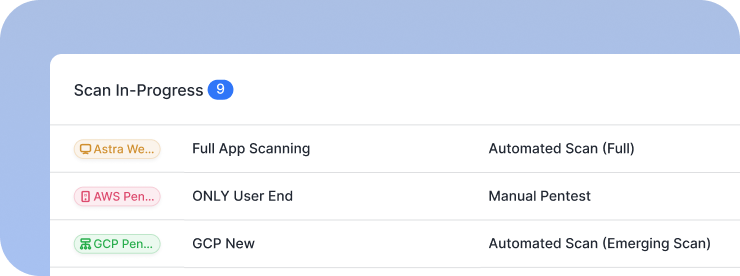
Cloud Storage & Database Security Review
- Audit cloud storage buckets and databases (CosmosDB) for public exposure and weak encryption.
- Validate access controls and data-in-transit policies to prevent mass data leaks.
- Compliance-ready for data protection standards in PCI-DSS, HIPAA, and GDPR.





Protect every layer of your cloud infra with comprehensive, compliance-ready cloud security assessment services.
Book a DemoAstra Security vs traditional vendors
See how our modern approach to cloud security assessment outpaces traditional vendor models and cloud security companies.
Experience the Astra Security difference: faster, smarter, compliance-ready pentesting.
Pentesting as a service, tailored for your industry
Continuous penetration testing and compliance mapping services built for ISO, SOC 2, HIPAA, PCI DSS, and more.

- Secure financial systems and payment workflows from logic flaws
- Deliver actionable fixes and maintain PCI DSS, ISO 27001, SOC 2, DORA compliance, and more
- Standards: OWASP, PTES, CVSS

- Protect patient data and secure APIs across web, mobile, and cloud
- Uncover hidden PHI exposures and validate HIPAA, ABHA, and more
- Standards: OWASP, PTES, NIST, CVSS

- Accelerate app security with DevSecOps integration and continuous scans
- Detect vulnerabilities with AI-driven validation and ensure ISO 27001, SOC 2, GDPR compliance and more
- Standards: OWASP, PTES, CVSS, NIST SP 800-115

- Protect customer data and secure payment flows from BOLA/IDOR risks
- Empower developers with guided remediation and PCI DSS, ISO 27001, SOC 2 compliance and more
- Standards: OWASP, PTES, CVSS

- Fortify cloud, container, and on-prem systems with authenticated tests
- Monitor and validate vulnerabilities to prevent downtime; comply with NIST, ISO 27001, SOC 2, CREST, Cert-In, and more
- Standards: OWASP, PTES, NIST, CVSS

- Discover shadow APIs and secure cloud services
- Deliver fast, developer-friendly fixes; ensure GDPR, ISO 27001, SOC 2 compliance
- Standards: OWASP, PTES, CVSS
Discover how expert-led cloud security assessment services can uncover critical misconfigurations and strengthen your multi-cloud posture for just $5,999.
Start TrialOur pentesters? World class, certified & contributors to top security projects
We find the bugs before the bad guys do
Our team stays ahead of the curve in the ever-evolving world of web security

.avif)
.avif)
.avif)




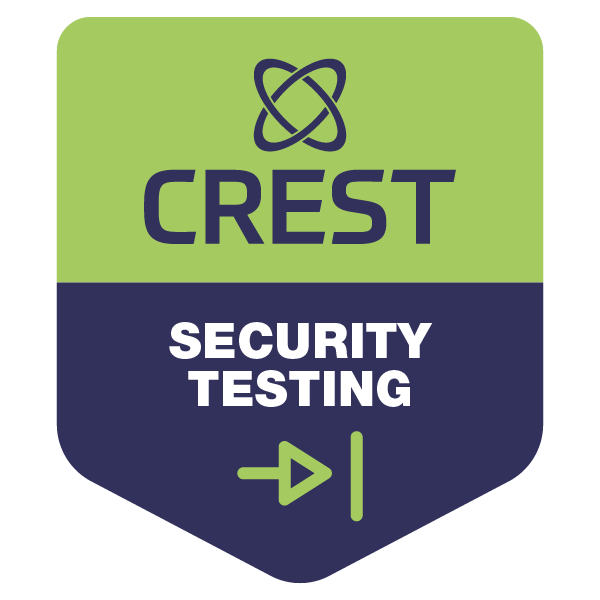
Stay compliant throughout the year
Understand our industry-specific pentests as a service plans designed to meet your compliance, scale, and security needs.
- Get compliance-ready year-round for ISO 27001, SOC 2, GDPR, HIPAA, PCI DSS, CREST, CERT-In, CIS Controls, NIST, & more
- Receive actionable insights from continuous pentesting and expert-led remediation guidance
- Track compliance progress with the Astra Security Compliance View, providing executive-friendly and technical views

- Review your cloud infra continuously for new CVEs, OWASP Top 10, SANS Top 25, PTES standards, and API-specific risks
- Identify and remediate vulnerabilities in real-time through automated scans, regression testing, and expert validation
- Monitor your attack surface dynamically with the Astra Security Vulnerability View, showing trends, risk scores, and remediation status

- Maintain audit-ready reports without manual effort
- Reduce risk exposure with real-time detection and validation
- Prioritize remediation based on business impact and compliance requirements
- Demonstrate security maturity to clients, regulators, and internal stakeholders


Frequently asked questions
What are cloud security assessment services?
Cloud security assessment services comprehensively evaluate your cloud infrastructure to identify security risks and misconfigurations. They help protect clients’ data and ensure their environment is securely protected against modern threats.
How do cloud security assessments work?
Experts review and analyze your cloud setup through automated scans and manual reviews. This process identifies vulnerabilities and tests security controls. You then receive a detailed report with actionable steps for improvement.
Why are cloud security assessments important?
They help you proactively detect security gaps before attackers exploit them, improve threat detection, and strengthen your posture against cloud-native risks. This reduces the risk of a costly data breach and ensures your business meets critical industry compliance requirements.
How often should a cloud security assessment be conducted?
A full comprehensive assessment should be done at least once a year. More frequent or continuous scanning in fast-changing environments, or after significant cloud-architecture changes, is recommended. Some frameworks even recommend formal reassessments every 24 months.
How much does a cloud security assessment cost?
It mostly varies. For most businesses, one-time assessments range roughly between $10,000 - $100,000+, depending on scope, size, and cloud complexity. Providers use various models, including fixed project-based and hourly pricing structures. At Astra Security, Cloud security plans start at $5999/year and further increase based on the number of targets.
Do these assessments help with compliance like ISO 27017 or SOC 2?
Yes, these assessments directly evaluate your controls against major frameworks. This includes ISO 27017 for cloud security and SOC 2 for security and availability trust principles.











